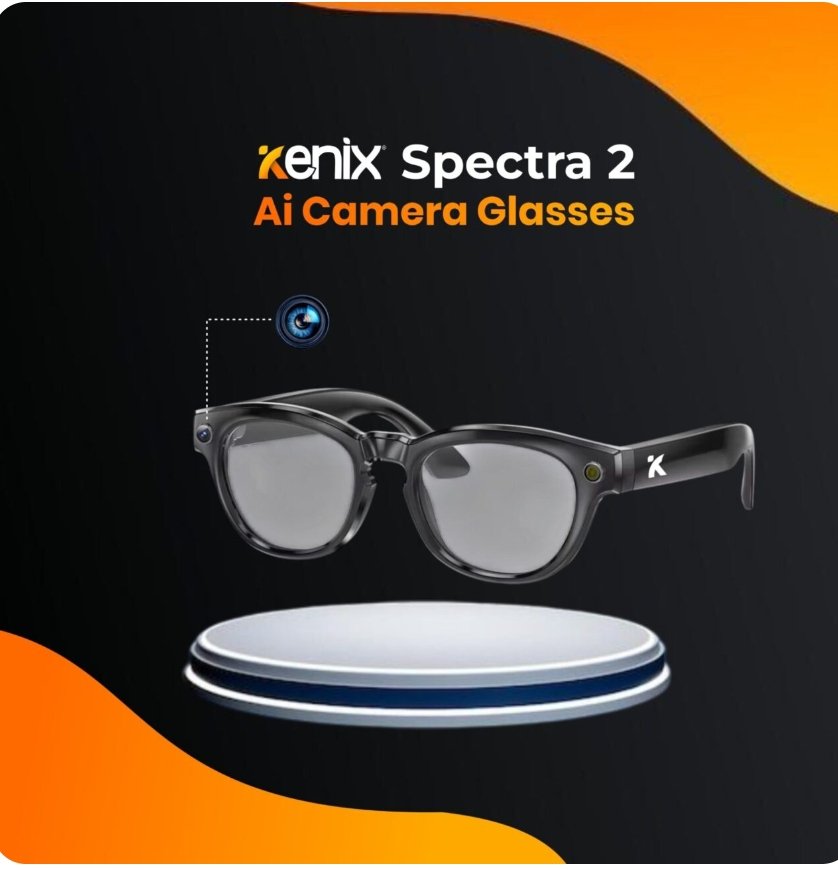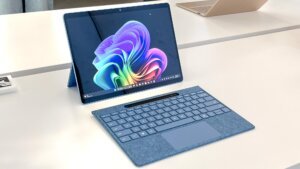Are the Kenix Spectra 2 AI Smart Glasses a practical step into the future of wearables, or just a gimmick? We tested these ₦130,000 smart glasses to see if the hype is real.
Sold as a constant companion for creators, the Spectra 2 promises to keep your eyes on the world while providing AI context, hands-free recording, and open-ear audio. But do they belong in your workflow? Here is the honest truth after one week of use.
Watch our detailed analysis of the camera, audio, and AI features.
What Are the Kenix Spectra 2 Glasses?
Unlike high-end AR glasses (like the Apple Vision Pro) that project screens in front of your eyes, the Kenix Spectra 2 are audio and camera-based smart glasses. It is important to note: They do not have a Heads-Up Display (HUD).
Instead, they rely on voice commands, touch gestures, and a smartphone connection (via the HeyCyan app) to perform tasks. Their main goal is to decrease phone addiction by allowing you to capture moments and access AI assistance without reaching into your pocket.
See what’s inside the box in 60 seconds.
Key Specs Breakdown
We broke down the technical specifications to see what you are actually getting for your money:
| 📷 Camera | 8MP Photos / 1080p Video |
|---|---|
| 🔊 Audio | Open-ear directional speakers |
| 🧠 AI Engine | ChatGPT-4o (via HeyCyan App) |
| 🔋 Battery | 290mAh (~3 hours active use) |
| 💾 Storage | 32GB Internal |
| 💰 Price | ~₦130,000 |
Performance Review: The Good & The Bad
1. Design and Comfort
The Kenix Spectra 2 frames look like standard thick-rimmed glasses, but they house a battery and motherboard, making them noticeably heavier. If you have a small nose bridge, they may slide down. Great for short bursts, but can cause fatigue if worn all day.
2. Audio & Music Experience
This is the standout feature. The open-ear speakers allow you to listen to music while hearing your environment. At 60-80% volume, the audio is clear and personal. Warning: at 100%, people around you will hear your music.
3. AI Features (ChatGPT-4o)
The glasses integrate with the HeyCyan app for visual and voice intelligence. The killer feature is “1-to-1 Translation,” which listens to foreign languages and plays the translation into your ear.
✅ The Pros
- Affordable price point (~₦130k)
- Excellent open-ear audio quality
- Real-time AI translation
- Hands-free POV recording
❌ The Cons
- Short battery life (~3 hours)
- No visual display (HUD)
- App connectivity can be glitchy
- Not water-resistant
Final Verdict: Who Should Buy These?
The Kenix Spectra 2 are compelling for Content Creators and Early Adopters. If you need quick POV shots or hands-free translation, these offer great value. However, they do not replace a smartphone.




